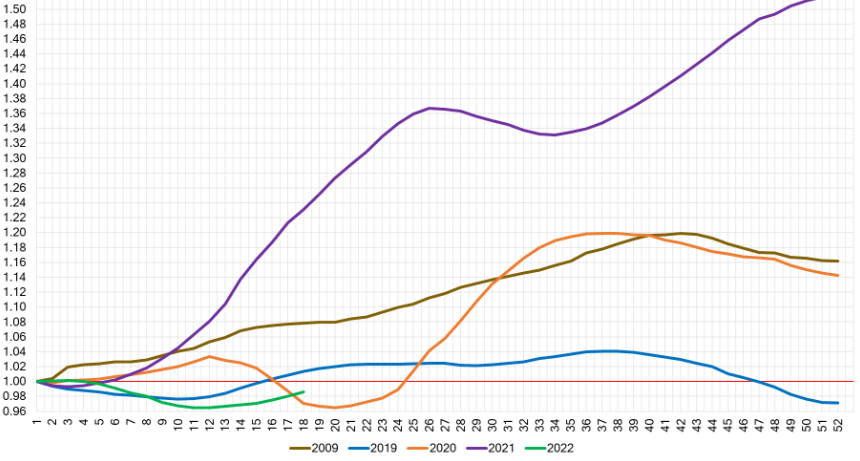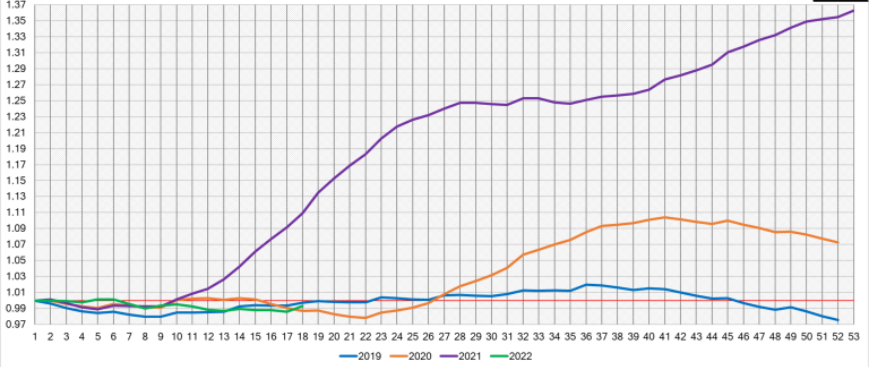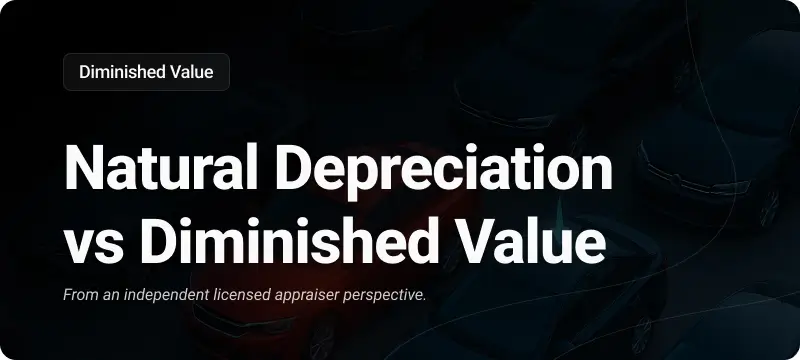The auto market continues to follow a new path of seasonality with the overall market having another week of increases last week. Traditionally, by this time of year, we would have started to see the spring market bump reverse and turn cars back into depreciating assets, but not this year, as cars continue to rise.
The Used Retail Calendar Year 2022 trend line has been closely following the Calendar Year 2020 trend line but is now interacting with the Calendar Year 2019 line. Some have speculated that there may be a spring market bounce since income tax returns have been delayed. After mainly being absent over the last 2 years, repossessions are starting to show up more often in the lane.
Smaller independent dealers and rental companies continue to dominate the lanes with larger independent dealers jumping in when a lower mile or cleaner vehicles come through.
| May 2022 | April 2022 | 2017-2019 Average | |
| Car segments | +0.31% | +0.38% | -0.14% |
| Truck & SUV segments | +0.05% | -0.02% | -0.06% |
| Market | +0.13% | +0.11% | -0.09% |
Weekly Wholesale Index
The calendar year 2020 and 2021 ended with used wholesale prices at elevated levels. With economic patterns (including the automotive market) driven by the pandemic, normal seasonal patterns (e.g., 2019 calendar year) in the wholesale market were not observed for most of the last 2 years.

The calendar year 2021 did not have typical seasonality patterns as the market had rapid increases in wholesale values for the majority of the year. The Wholesale Weekly Price Index reached the highest point of the year at the end of December, reporting over 1.51 points. Now, in the calendar year 2022, the index has been reverted back to the 1.00 mark and overall wholesale prices remained relatively stable after February’s declines.
The graph below looks at trends in wholesale prices of 2-6-year-old vehicles, indexed to the first week of the year. The index is computed by keeping the average age of the mix constant to identify market movements.
Used Retail Prices
Used Retail Prices are more accessible than in years past, due to the proliferation of ‘no-haggle pricing’ for used-vehicle retailing. Transparent pricing upfront makes the car buying process more enjoyable for customers and allows Black Book to accurately measure retail market trends.

At the onset of the pandemic, in CY2020, used retail prices increased slightly, following typical seasonal patterns, and then began dropping in April, finally hitting a low point in the late spring months. By the late summer of CY2020, Used Retail Prices increased as the supply of new vehicle inventory started to become scarce, but retail demand slowed down at the end of CY2020, resulting in declining retail asking prices for the last several weeks of the year. When CY2021 kicked off, demand rebounded while retail prices lagged slightly behind wholesale prices; March of 2021 started the dramatic increases in Used Retail Prices, fueled by stimulus payments, tax season, and shortages of new inventory. During the third quarter, retail prices continued to rise at a slower rate but soon picked up the pace once again to start the fourth quarter. In Q4, prices on retail listings steadily increased week after week. As CY2021 came to an end, the retail listing price index closed 36% above where the year began.
So far in 2022, the Retail Listings Price Index has remained relatively unchanged (green curve on the graph below), The Index sits around 0.99, indicating a very slight decrease in retail pricing. Typically, there is a lag between changes in wholesale prices and retail prices.
This analysis is based on approximately two million vehicles listed for sale on U.S. dealer lots. The graph below looks at 2-6-year-old vehicles. The Index is computed by keeping the average age of the mix constant to identify market movements.



